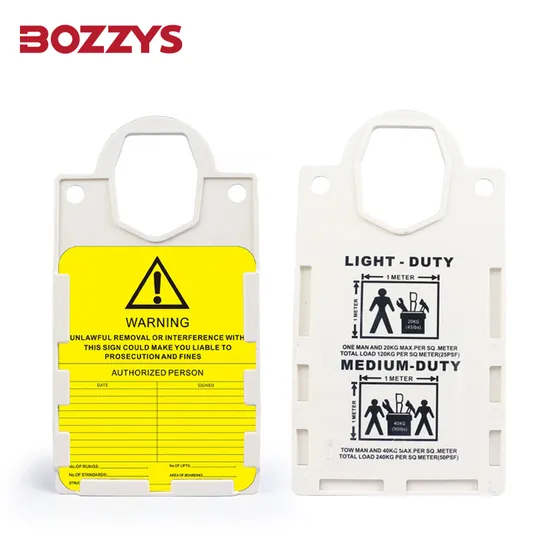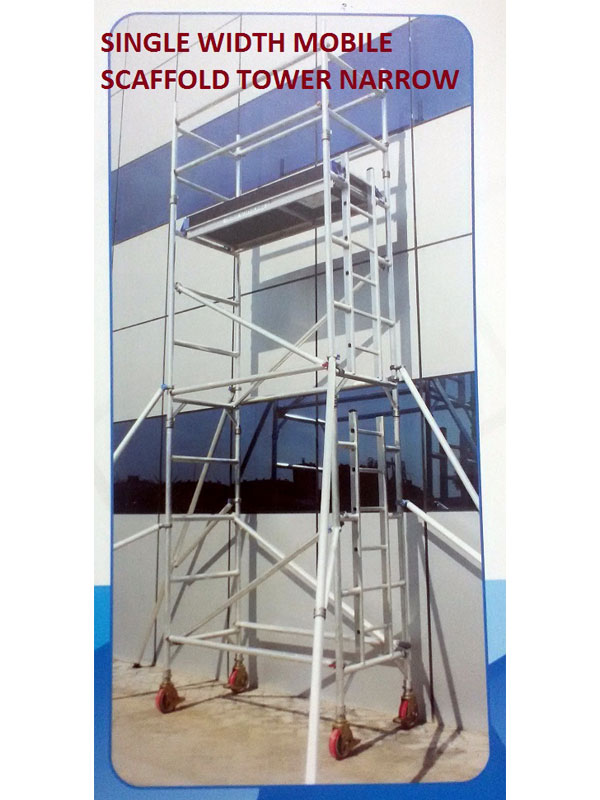Calculating scaffolding quantity is essential in construction. It ensures safety and cost-effectiveness.
In Saudi Arabia, construction projects are vast and varied. Builders often face challenges in determining the right amount of scaffolding. Accurate calculations prevent material shortages or excesses, impacting project timelines and budgets. Understanding the factors involved is crucial for successful project execution.
Scaffolding supports workers and materials at heights. It’s crucial for efficiency and safety on construction sites. Each project has unique needs based on size, design, and regulations. In Saudi Arabia, environmental conditions also play a role. Construction standards are strict to ensure safety and compliance. Builders must consider these factors to calculate scaffolding quantity accurately. By understanding these elements, you can plan effectively and avoid costly mistakes. This guide will explore methods to determine scaffolding needs, ensuring your project runs smoothly.

Credit: www.youtube.com
Introduction To Scaffolding In Saudi Arabia
Scaffolding is a crucial component in Saudi Arabia’s construction sector. It provides temporary support and access during building projects. Understanding scaffolding’s role is vital for ensuring safety and efficiency.
Importance In Construction
Scaffolding ensures workers can reach high places safely. It offers stability while carrying out construction tasks. Properly installed scaffolds reduce risks of accidents and injuries. This makes them indispensable for construction projects. Scaffolding also allows for efficient material handling.
Regulatory Requirements
Saudi Arabia has strict scaffolding regulations. Compliance ensures safety and adherence to standards. Regulations cover scaffold design, erection, and dismantling. These rules aim to minimize workplace hazards. Knowing local regulations is crucial for project planning.

Credit: www.cfr.org
Types Of Scaffolding
Scaffolding is essential in construction for worker safety and efficiency. Different types of scaffolding cater to diverse construction needs. Choosing the right type ensures safety and optimal performance. Let’s explore the main types of scaffolding used in Saudi Arabia.
Supported Scaffolding
Supported scaffolding is the most common type. It consists of platforms supported by rigid, load-bearing poles. These are ideal for construction projects on flat surfaces. They provide a stable working platform at various heights. Supported scaffolds are often used for bricklaying and painting jobs.
Suspended Scaffolding
Suspended scaffolding hangs from the top of a structure. It uses ropes or wires to support the platform. This type is perfect for tall buildings and skyscrapers. Workers can adjust the height as needed. Suspended scaffolding is great for window cleaning and exterior repairs.
Rolling Scaffolding
Rolling scaffolding features wheels or casters. This allows easy movement across a construction site. It is suitable for tasks that require frequent position changes. Rolling scaffolds are used indoors for painting and ceiling work. They provide flexibility and convenience for workers.
Basic Components Of Scaffolding
Understanding the basic components of scaffolding is crucial in construction. These components ensure safety and stability. In Saudi Arabia, knowledge of these parts helps in precise quantity calculation. Let’s explore the key components used in scaffolding.
Standards
Standards are vertical tubes. They support the weight of the scaffolding. They connect to the ground and rise to the required height. Standards carry the load to the ground. They keep the structure stable.
Ledgers
Ledgers are horizontal tubes. They connect to the standards. They run parallel to the structure. Ledgers provide support for the platforms. They also ensure the scaffolding remains rigid.
Braces
Braces are diagonal tubes. They connect standards and ledgers. Braces add extra stability. They prevent the scaffolding from swaying. Braces are essential for structures in windy areas.
Platforms
Platforms are the working surfaces. They are placed on ledgers. Workers stand and move on these platforms. Platforms need to be strong. They should support workers and materials safely.
Factors Affecting Scaffolding Quantity
Calculating scaffolding quantity in Saudi Arabia depends on project size, building height, and site conditions. Accurate measurements ensure safety and cost efficiency.
Understanding the factors affecting scaffolding quantity is crucial for any construction project in Saudi Arabia. Whether you’re building a towering skyscraper in Riyadh or a residential complex in Jeddah, knowing these factors can save you time and resources. Let’s explore how project size, building height, and design complexity influence scaffolding needs.Project Size
The size of your construction project directly impacts the amount of scaffolding you need. Larger projects typically require more scaffolding to cover extensive areas. This means more materials, labor, and time. You might find that a vast commercial project demands scaffolding for multiple areas simultaneously. Smaller projects, in contrast, may only need scaffolding for specific sections at a time. Consider the scope of your project to determine the quantity needed.Building Height
The height of the building also plays a significant role in scaffolding quantity. Taller buildings require scaffolding that can safely reach higher levels. This could mean additional layers or more complex scaffolding systems. Imagine working on a multistory office building. You’ll need scaffolding that not only reaches the top but is also stable enough to handle the height safely. Safety should be your top priority when planning for taller structures.Complexity Of Design
The design complexity of a building can complicate scaffolding requirements. Intricate architectural details may necessitate custom scaffolding solutions. This can increase both the quantity and the type of scaffolding used. For example, if your project involves unique curves or angles, standard scaffolding might not suffice. Custom solutions would be necessary to accommodate these designs. Consider how the design’s complexity will affect your scaffolding needs. Have you considered all these factors in your current or upcoming project? By addressing these key areas, you ensure that your scaffolding plan is efficient and cost-effective. Proper planning today can prevent costly adjustments tomorrow.Step-by-step Calculation Process
Calculating scaffolding quantity involves measuring the building dimensions accurately. Consider factors like height, width, and complexity of structure. Use these measurements to determine the number of scaffolding units needed for safe construction.
Calculating scaffolding quantity in construction projects can be a daunting task, especially in a bustling environment like Saudi Arabia. Knowing the exact amount of scaffolding required is crucial for efficiency and safety. This step-by-step calculation process will guide you through the essential stages, ensuring you have the right amount for your project without overspending or under-preparing.Site Assessment
Begin by assessing the site thoroughly. Look at the terrain and any obstacles that may affect scaffolding placement. Is the ground level, or will adjustments be needed? Are there any structures or natural features that could obstruct scaffolding? Understanding your site allows you to foresee challenges and plan effectively. Consider the height and complexity of the structure. A residential building and an industrial facility have different scaffolding needs. You should also think about the weather conditions in Saudi Arabia, as extreme heat might affect materials used.Measurement Of Dimensions
Accurate measurements are crucial. Measure the height, width, and depth of the structure needing scaffolding. Use a laser measure or tape for precision. Don’t forget to account for any overhangs or protrusions. Calculate the total surface area you need to cover. This will guide how much scaffolding you need. It’s like fitting a puzzle piece; you need to know the exact size to avoid gaps or overlaps.Calculation Of Volume
Once you have the dimensions, calculate the volume of scaffolding required. Multiply the measured height by width and depth. This gives you a base figure to work from. Factor in additional space for platforms and working areas. How much room will workers need to move around safely? Consider safety regulations in Saudi Arabia which might require more space than expected. Use scaffolding calculators available online for quick results. These tools simplify the process, saving time and reducing errors. Have you ever tried one? It can be a real game-changer. Think about your budget. Is it aligned with the scaffolding volume you calculated? Sometimes adjustments are necessary to balance cost and necessity. By following this methodical approach, you ensure that your scaffolding needs are met efficiently. How does your current approach compare to these steps? Are there changes you could make for better results?Cost Estimation
Cost estimation is crucial in calculating scaffolding quantity. It ensures budget accuracy. Understanding cost components helps in efficient planning. In Saudi Arabia, construction costs vary. Factors like materials, labor, and extra expenses are key. Accurate estimation aids in avoiding financial surprises.
Material Costs
Scaffolding materials form a significant cost part. Steel and aluminum are common choices. Prices depend on quality and quantity. Import duties and transport fees affect costs too. Local suppliers may offer competitive pricing. Always compare multiple quotes for the best deal.
Labor Costs
Labor costs in Saudi Arabia vary by skill level. Skilled workers demand higher wages. Unskilled labor is more affordable. Safety training impacts labor costs. Experienced teams work faster, reducing overall costs. Budgeting for labor ensures efficient project execution.
Additional Expenses
Don’t overlook additional expenses. These include permits and insurance. Permits are essential for legal compliance. Insurance protects against accidents. Equipment rental adds to costs. Seasonal demand may increase prices. Plan for these to avoid budget overruns.
Safety Considerations
Calculating scaffolding quantity in Saudi Arabia requires understanding safety considerations. Ensure proper load capacity and stability. Check local regulations to maintain compliance and protect workers.
When calculating scaffolding quantity in construction, especially in Saudi Arabia, safety considerations are crucial. Ensuring the safety of workers and the structural integrity of the scaffolding is vital. You need to understand how different safety aspects influence the overall quantity and type of scaffolding required for a project. Let’s delve into some critical safety considerations like load capacity, stability, and inspection protocols.Load Capacity
Understanding load capacity is essential. Each scaffolding type has a specific load limit, which refers to the maximum weight it can support safely. Always check the manufacturer’s specifications and ensure that the scaffolding is capable of handling the weight of workers, tools, and materials. A personal lesson I learned was during a project where neglecting load capacity almost led to a mishap. We quickly rectified it by reducing the number of workers on the platform, ensuring safety and compliance. Do you know the full weight your scaffolding needs to support?Stability
Stability is non-negotiable. Without a stable base, scaffolding can become a safety hazard. Ensure the ground surface is level and firm. Use base plates and adjustable jacks to secure the footing. Think about a time when you noticed a slight wobble in a structure. It’s unsettling, isn’t it? Addressing stability upfront can prevent such unsafe conditions. Always double-check that the scaffolding is properly anchored, especially in windy conditions.Inspection Protocols
Regular inspection protocols can save lives. Develop a routine for inspecting scaffolding before each shift. Look for any signs of wear or damage. During a project, I made it a point to personally inspect scaffolding daily. This not only ensured safety but also built trust among the crew. Are you confident in your current inspection routine? Implementing thorough checks can prevent accidents and ensure compliance with safety standards. By paying attention to these safety considerations, you can ensure a secure and efficient construction process in Saudi Arabia. Prioritize safety and make it an integral part of your scaffolding calculations.
Credit: www.youtube.com
Expert Tips For Accurate Calculation
Calculating scaffolding quantity in construction is crucial in Saudi Arabia. Accurate estimation ensures safety and cost-efficiency. Experts offer valuable tips to achieve precise calculations.
Use Of Software Tools
Software tools simplify scaffolding calculations. They provide reliable data and reduce human error. Many construction companies in Saudi Arabia rely on these tools. They offer detailed scaffolding plans and material lists. Using software saves time and improves accuracy.
Consultation With Professionals
Experienced professionals bring insights and guidance. They help evaluate the project needs effectively. Consulting experts ensures proper scaffolding design and implementation. Their experience offers solutions to complex situations.
Regular Updates And Adjustments
Construction projects often change over time. Regular updates ensure scaffolding remains adequate. Adjustments prevent accidents and delays. Staying informed about site changes is essential. Constant monitoring keeps the scaffolding plans relevant.
Case Studies
Case studies offer valuable insights into real-world applications of scaffolding calculations. In Saudi Arabia, construction projects vary in scope and complexity. Understanding these cases helps professionals make informed decisions. This section examines successful projects and lessons learned.
Successful Projects
Several projects in Saudi Arabia have successfully calculated scaffolding needs. One example is the King Abdullah Financial District. The team managed to efficiently measure scaffolding requirements. They used precise calculations and local expertise. This approach minimized waste and costs.
Another example is the Riyadh Metro project. This large-scale endeavor required extensive scaffolding calculations. Engineers conducted thorough site assessments. They ensured scaffolding met safety and structural standards. The project stayed on schedule and within budget.
Lessons Learned
These projects provide essential lessons for future construction efforts. A key takeaway is the importance of local knowledge. Understanding regional regulations and materials aids in accurate calculations.
Additionally, collaboration among team members proves crucial. Engineers, architects, and construction workers must communicate effectively. This ensures everyone understands the scaffolding needs and calculations. Consistent communication reduces errors and improves project outcomes.
Lastly, adopting technology enhances efficiency. Advanced software tools can streamline scaffolding calculations. They provide precise measurements and quick adjustments. This reduces manual errors and saves time.
Frequently Asked Questions
How To Calculate Scaffolding Quantity?
Calculate scaffolding quantity by measuring the area (length x height). Determine the number of standards, ledgers, and braces. Use scaffolding charts for precise calculations.
What Is The Formula For Scaffold Load Calculation?
The formula for scaffold load calculation is Load = (Live Load + Dead Load) / Safety Factor. Always consult specific regulations and standards for accuracy.
How Do You Measure For Scaffolding?
Measure scaffolding by calculating the height, width, and length of the area. Account for obstacles and access points. Ensure compliance with safety regulations.
How Is Scaffolding Cost Calculated?
Scaffolding cost is calculated based on factors like project size, duration, materials, labor, and location. Rates may vary.
Conclusion
Calculating scaffolding quantity is crucial for construction projects in Saudi Arabia. Start with accurate measurements of your site. Use clear calculations to estimate the amount needed. Always consider local regulations and safety standards. Correct quantity ensures efficiency and safety on-site.
It saves time and money in the long run. Consult professionals if unsure about measurements. Keep records for future projects. Accurate scaffolding calculations lead to successful construction outcomes. Stay informed about industry practices. This knowledge helps avoid costly mistakes. Scaffolding quantity impacts project success.
Make it a priority.


